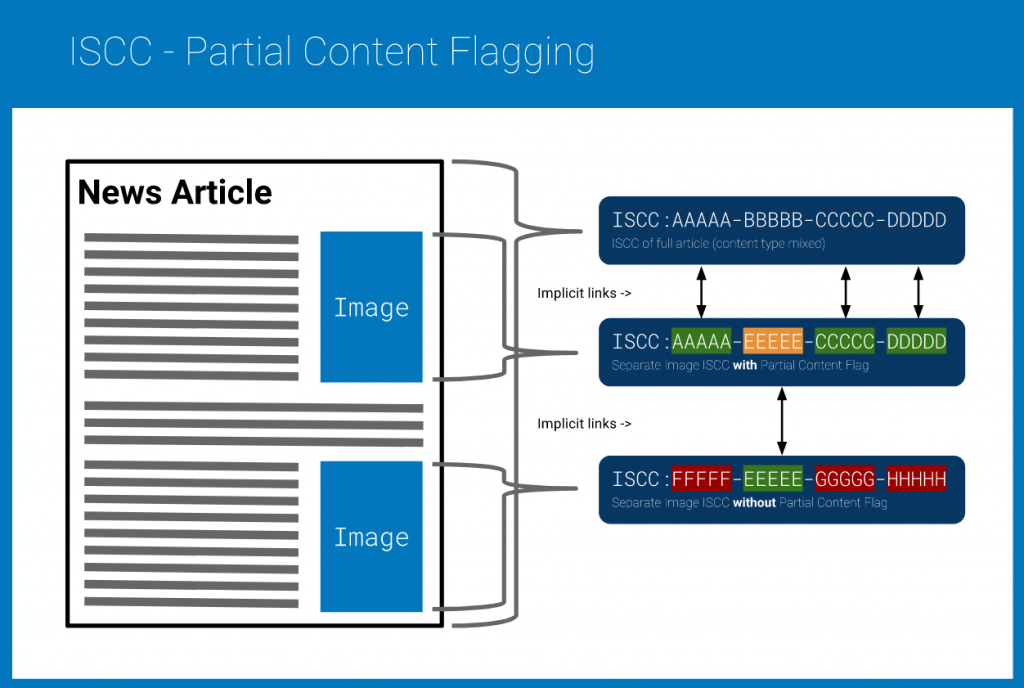Extended capabilities of the ISCC
The ISCC is not only suited to unambiguously identify complete works, but can also be easily used to unambiguously reference parts of a work.
For example, let’s take a news article consisting of 500 words and three images.
In addition to the most obvious use case, i. e., the creation of an ISCC for the complete work, it is possible to additionally create an ISCC for the text only and three ISCCs for the corresponding images. In so doing, the ISCCs of the images can be linked implicitly to the ISCC of the complete work by means of unvarying ISCC components. If this is not desired, the images can be tagged as independent works by adding separate title-metadata. Theoretically, it is also possible to create ISCCs for smaller parts of a work, e.g., for each paragraph, optionally carrying along the context of the superordinate work.
Creating numerous ISCCs for parts of a work introduces new opportunities in monetization, tracking and licensing. For example, it is easily possible to define within an associated Smart Contract that only one of the three images and only the introductory paragraph of the article shall be freely accessible and may be posted publicly in social networks like Facebook. As soon as the article as a whole is to be shared, other licensing rules would apply.


